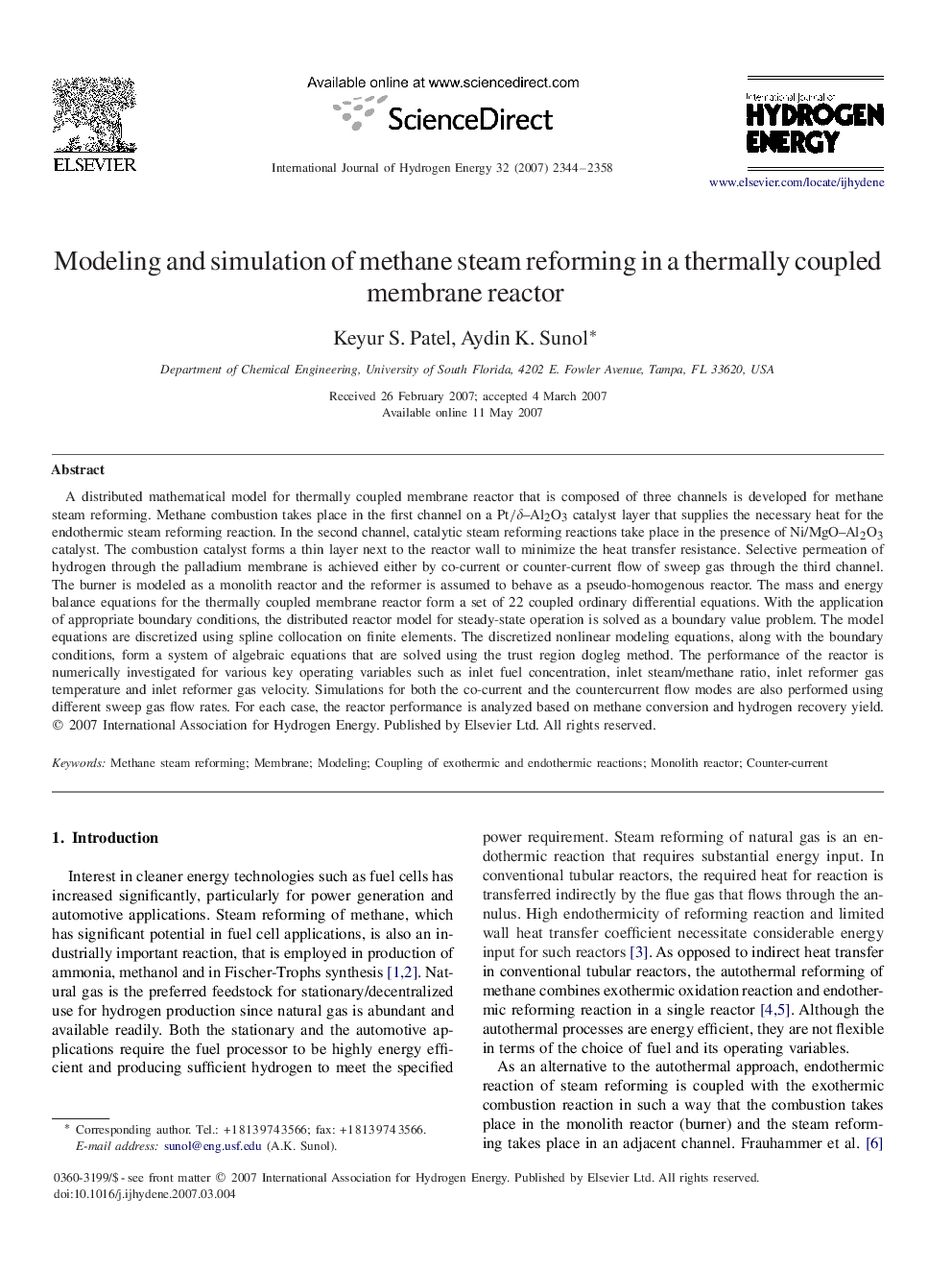| کد مقاله | کد نشریه | سال انتشار | مقاله انگلیسی | نسخه تمام متن |
|---|---|---|---|---|
| 1280338 | 1497671 | 2007 | 15 صفحه PDF | دانلود رایگان |

A distributed mathematical model for thermally coupled membrane reactor that is composed of three channels is developed for methane steam reforming. Methane combustion takes place in the first channel on a Pt/δ–Al2O3Pt/δ–Al2O3 catalyst layer that supplies the necessary heat for the endothermic steam reforming reaction. In the second channel, catalytic steam reforming reactions take place in the presence of Ni/MgO–Al2O3 catalyst. The combustion catalyst forms a thin layer next to the reactor wall to minimize the heat transfer resistance. Selective permeation of hydrogen through the palladium membrane is achieved either by co-current or counter-current flow of sweep gas through the third channel. The burner is modeled as a monolith reactor and the reformer is assumed to behave as a pseudo-homogenous reactor. The mass and energy balance equations for the thermally coupled membrane reactor form a set of 22 coupled ordinary differential equations. With the application of appropriate boundary conditions, the distributed reactor model for steady-state operation is solved as a boundary value problem. The model equations are discretized using spline collocation on finite elements. The discretized nonlinear modeling equations, along with the boundary conditions, form a system of algebraic equations that are solved using the trust region dogleg method. The performance of the reactor is numerically investigated for various key operating variables such as inlet fuel concentration, inlet steam/methane ratio, inlet reformer gas temperature and inlet reformer gas velocity. Simulations for both the co-current and the countercurrent flow modes are also performed using different sweep gas flow rates. For each case, the reactor performance is analyzed based on methane conversion and hydrogen recovery yield.
Journal: International Journal of Hydrogen Energy - Volume 32, Issue 13, September 2007, Pages 2344–2358